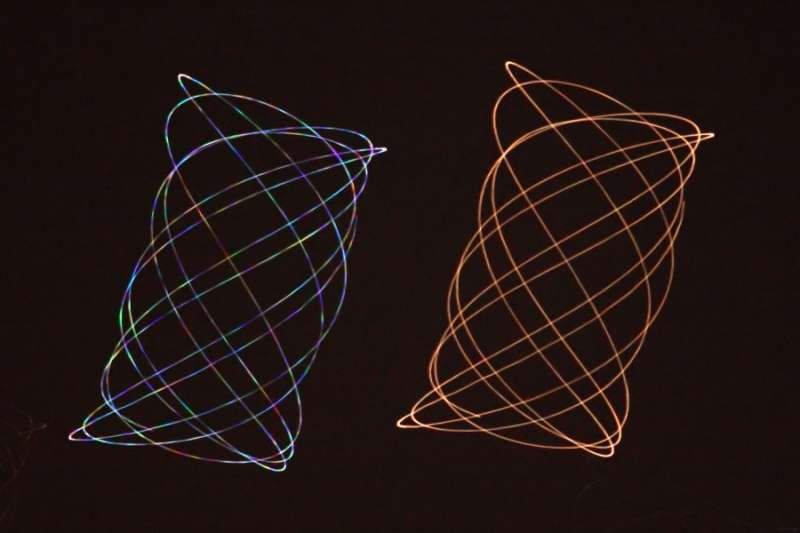
|
Credit & Copyright: Juergen Michelberger
Explanation:
On June 4, 2010 Regulus, alpha star of the constellation Leo,
and wandering planet Mars were at about the same apparent brightness,
separated on the sky by 1.5 degrees.
An ingenious and creative 10 second exposure from
a swinging camera
recorded these gyrating trails of the celestial pairing.
Can you tell which trail belongs to the star and
which to the planet?
Hint: atmospheric turbulence causes the image of the
star to scintillate or
vary in brightness and color more readily than the planet.
The scintillation is more pronounced
because the star is effectively a point source of light seen
as a narrow bundle of light rays.
Rapidly changing
refraction due to
turbulence along the
line of sight affects
different colors of light by
different amounts and generally produces a
twinkling
effect for stars.
But Mars is much closer than the distant stars and an extended
source of light.
Though tiny, its disk is seen as a bundle of
light rays that is substantially broader compared to
a star's and so, on average,
less affected by small scale
turbulence.
The result is the varied,
rainbow like trail for Regulus (left)
and the steadier, consistently reddish trail for Mars.
|
January February March April May June July August September October November December |
| ||||||||||||||||||||||||||||||||||||||||||||||||
NASA Web Site Statements, Warnings, and Disclaimers
NASA Official: Jay Norris. Specific rights apply.
A service of: LHEA at NASA / GSFC
& Michigan Tech. U.
Based on Astronomy Picture
Of the Day
Publications with keywords: star - regulus - planet - Mars - refraction
Publications with words: star - regulus - planet - Mars - refraction
See also:
- APOD: 2025 September 28 Á Leopard Spots on Martian Rocks
- APOD: 2025 July 15 Á Collapse in Hebes Chasma on Mars
- APOD: 2025 July 6 Á The Spiral North Pole of Mars
- APOD: 2025 June 29 Á Dark Sand Cascades on Mars
- APOD: 2025 June 22 Á A Berry Bowl of Martian Spherules
- APOD: 2025 June 15 Á Two Worlds One Sun
- APOD: 2025 June 11 Á 25 Brightest Stars in the Night Sky
